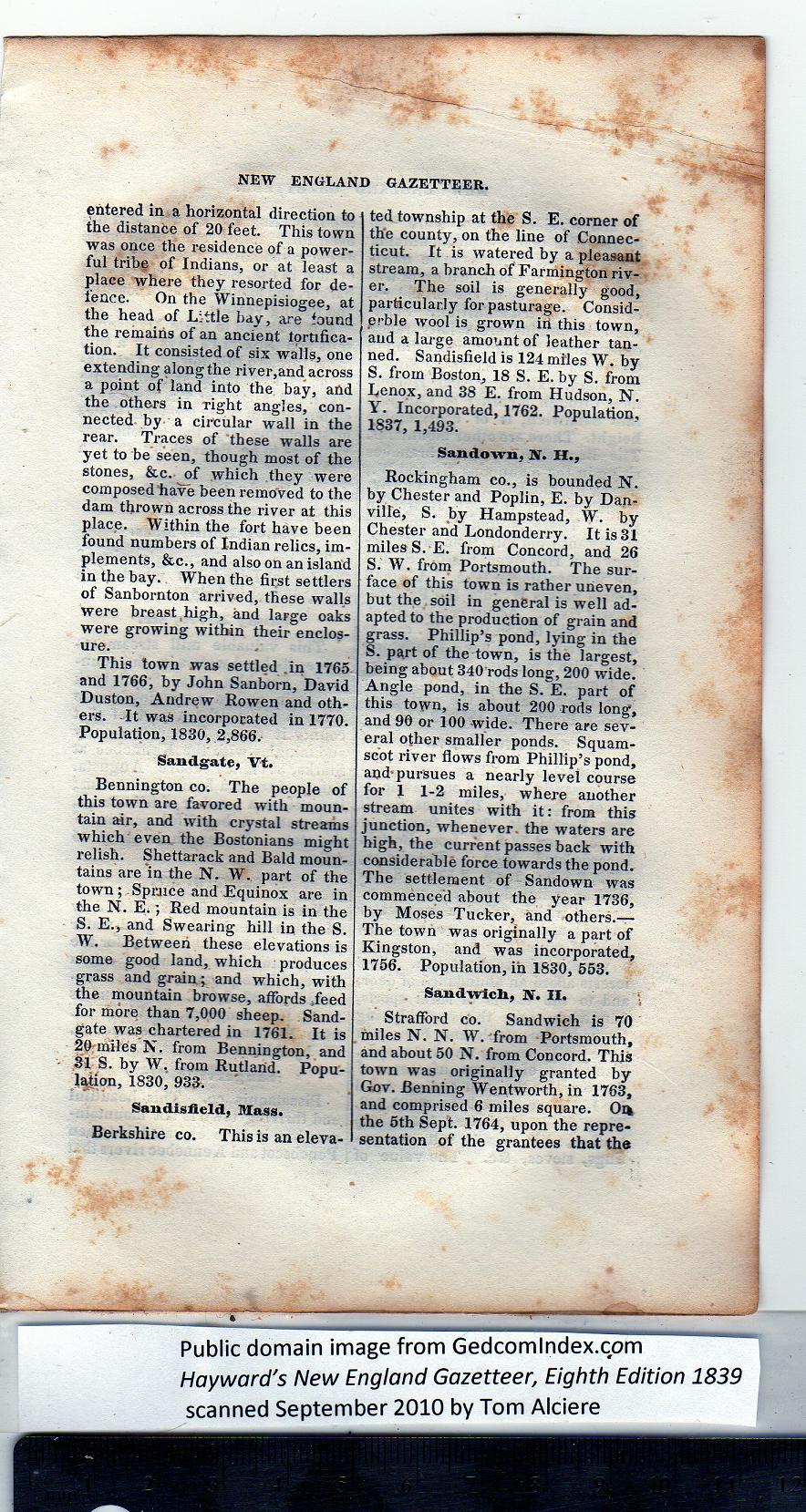|
entered in a horizontal direction to
the distance of 20 feet. This town
was once the residence of a power-
ful tribe of Indians, or at least a
place where they resorted for de-
fence. On the Winnepisiogee, at
the head of Little hay, are found
the remains of an ancient iortifica-
tion. It consisted of six walls, one
extending alongthe river,and across
a point of land into the bay, and
the others in right angles, con-
nected by a circular wall in the
rear. Traces of these walls are
yet to be seen, though most of the
stones, &c. of which they were
composed have been removed to the
dam thrown across the river at this
place. Within the fort have been
found numbers of Indian relics, im-
plements, &c., and also on an island
in the bay. When the first settlers
of Sanbornton arrived, these walls
were breast high, and laFge oaks
were growing within their enclos-
ure.
This town was settled .in 1765
and 1766, by John Sanborn, David
Duston, Andrew Rowen and oth-
ers. It was incorporated in 1770.
Population, 1830, 2,866.
Sandgate, Vt.
Bennington co. The people of
this town are favored with moun-
tain air, and with crystal streams
which even the Bostonians might
relish. Shettarack and Bald moun-
tains are in the N. W. part of the
town; Spruce and Equinox are in
the N. E.; Red mountain is in the
S. E., and Swearing hill in the S.
W. Between these elevations is
some good land, which produces
grass and grain; and which, with
the mountain browse, affords Teed
for more than 7,000 sheep. Sand-
gate was chartered in 1761. It is
20 miles N. from Bennington, and
31 S. by W. from Rutland. Popu-
lation, 1830, 933.
Sandisfield, Mass. |
Berkshire co. This is an eleva-
ted township at the S. E. corner of
the county, on the line of Connec-
ticut. It is watered by a pleasant
stream, a branch of Farmington riv-
er. The soil is generally good,
particularly for pasturage. Consid-
erable wool is grown in this town,
and a large amount of leather tan-
ned. Sandisfield is 124 miles W. by
S. from Boston, 18 S. E. by S. from
Lenox, and 38 E. from Hudson, N.
Y. Incorporated, 1762. Population,
1837, 1,493.
Sandown, N. H.,
Rockingham co., is bounded N.
by Chester and Poplin, E. by Dan-
ville, S. by Hampstead, W. by
Chester and Londonderry. It is 31
miles S. E. from Concord, and 26
S. W. from Portsmouth. The sur-
face of this town is rather uneven,
but the soil in general is well ad-
apted to the production of grain and
grass. Phillip’s pond, lying in the
S. part of the town, is the largest,
being about 340 rods long, 200 wide.
Angle pond, in the S. E. part of
this to\vn, is about 200 rods long,
and 90 or 100 wide. There are sev-
eral other smaller ponds. Squam-
scot river flows from Phillip’s pond,
and pursues a nearly level course
for 1 1-2 miles, where another
stream unites with it: from this
junction, whenever the waters are
high, the current passes back with
considerable force towards the pond.
The settlement of Sandown was
commenced about the year 1736,
by Moses Tucker, and others.—
The town was originally a part of
Kingston, and was incorporated,
1756. Population, in 1830, 553.
Sandwich, N. II.
Strafford co. Sandwich is 70
miles N. N. W. from Portsmouth,
and about 50 N. from Concord. This
town was originally granted by
Gov. Benning Wentworth, in 1763,
and comprised 6 miles square. Oft
the 5th Sept. 1764, upon the repre-
sentation of the grantees that the |
